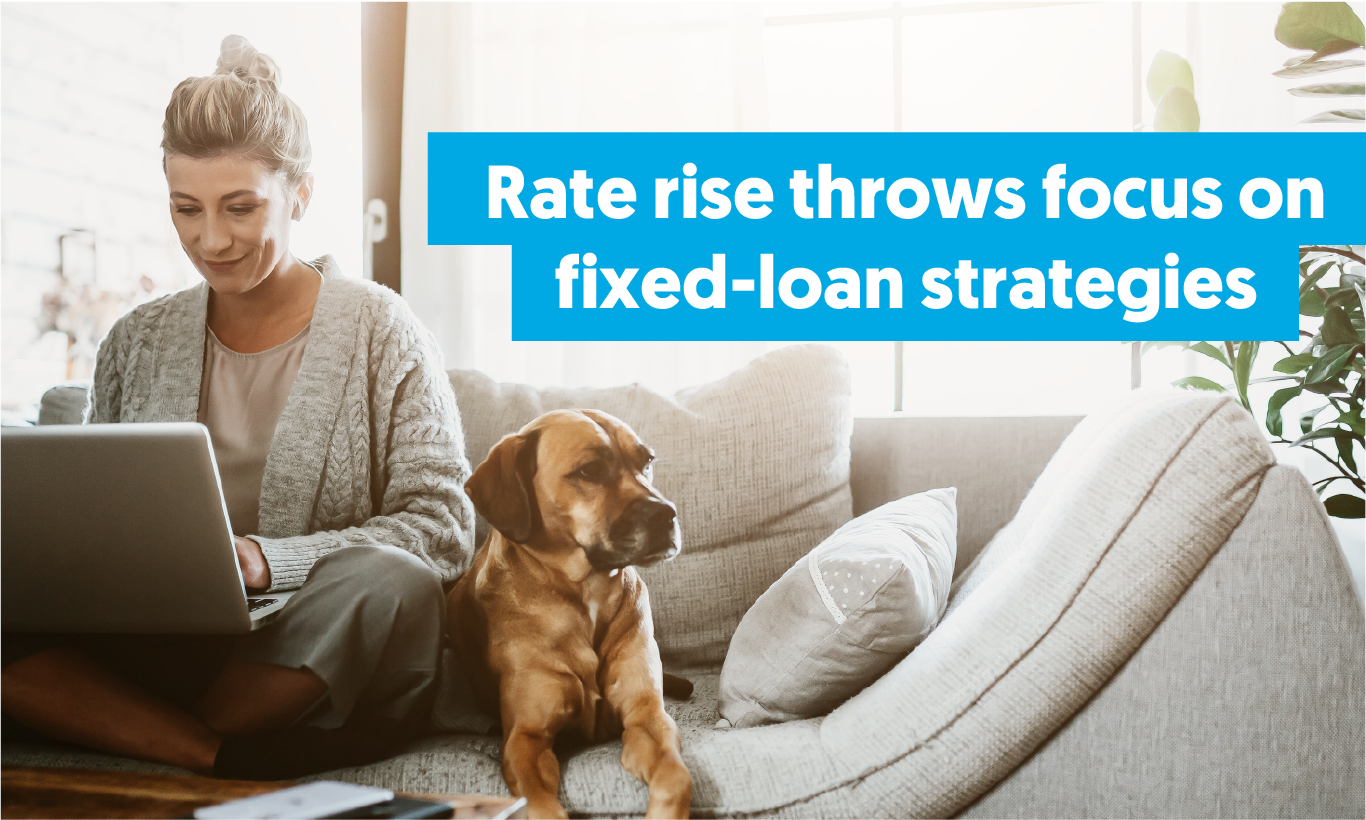
The recent increase to 0.35% in the Reserve Bank’s target cash rate has changed the mood of many homeowners who have a variable interest rate with their lenders.
The question now beckons whether to move to a fixed-rate loan as protection from future interest rate increases, which most commentators agree are inevitable to fight spiralling inflation, which currently stands at 5.1%.
Bank economists forecast incremental rises of 0.25% in the cash rate over the next 18 to 24 months.
ANZ Bank is the most pessimistic, predicting the cash rate will exceed 3% before the end of next year. Westpac believes it will hit 2% within 12 months, and NAB puts its money on a 2.5% rate by August next year.
However the story unfolds, homeowners should explore all the options with their brokers. That’s because lenders use the Reserve Bank’s target cash rate as a reference for the interest they charge borrowers.
Using the Big Four banks as examples at the time of writing, the interest rates available for their advertised variable loans, plus their monthly repayment on a $400,000 principal and interest loan over 25 years, were:
- ANZ (Standard variable home loan) – 3.24% p.a. (comparison rate 3.24% p.a.). Monthly repayment $1,739.
- Commonwealth (Standard variable home loan) – 4.55% p.a. (comparison rate 4.7% p.a.). Monthly repayment $2,039.
- NAB (Base variable home loan special) – 3.24% p.a. (comparison rate 3.28% p.a.). Monthly repayment $1,739.
- Westpac (Rocket Repay home loan) – 4.83%p.a. (comparison rate 4.97% p.a.). Monthly repayment $2,106.
Each of these loans features varying conditions, such as loan-to-value ratios, but all include repayments of the principal and interest. Note however that these values change regularly and whenever comparing loans, it’s important to ensure you’re also considering like for like in terms of loan features.
Any future rise in the target cash rate will almost certainly force up variable interest rates, although all lenders decide to pass on the increase independently.
As a guide, it’s worth examining the impact of rate rises on the average-sized home loan of $611,524, as calculated by the Australian Bureau of Statistics.
Using the premise that its interest rate was 3% over 25 years before the Reserve Bank moved, a typical monthly repayment of principal and interest would increase by $80 to $2,980.
If, as NAB predicts, the cash rate rises to 2.5%, and the lender increases its interest rates in line with the cash rate, then the loan’s interest rate will increase to 5.4% p.a., hiking repayments by $819 to $3,719.
Rising interest rates are always a double-edged sword. They can favour those who are saving to buy a home because the interest on savings also increases, though the higher repayments can raise the serviceability requirements.
There’s additional evidence that the constant speculation of higher rates has dampened the rising values of property.
Industry researcher CoreLogic reports the annual growth in home values “is now falling sharply”. Both Sydney (-0.2%) and Melbourne (-0.04%) have fallen into negative, month-on-month territory.
Head of research at CoreLogic, Tim Lawless, said: “We are likely to see a further loss of momentum in housing conditions over the remainder of the year and into 2023”.
The CoreLogic report adds: “The RBA noted a 2% rise in interest rates could lower housing prices by 15%. Those who purchased a home over the past year will likely see the value of their home fall below the purchase price.”
As most borrowers had to find a 20% deposit for their loans, “instances of negative equity are likely to be infrequent”, said CoreLogic.
If changing interest rates have made you curious to understand their impact on your home loan, let’s connect. We can examine your current loan and look at what other options may be available to you.
